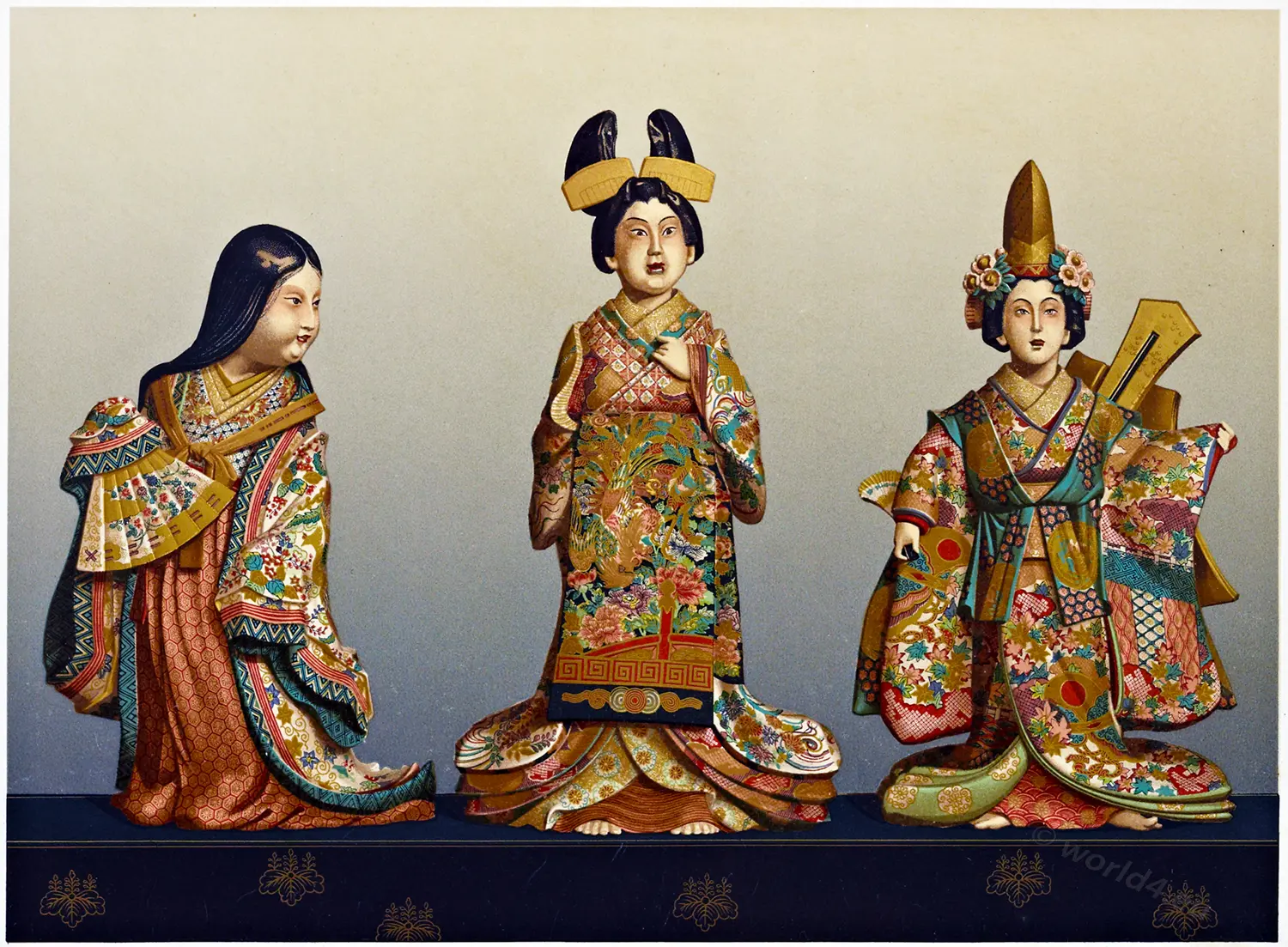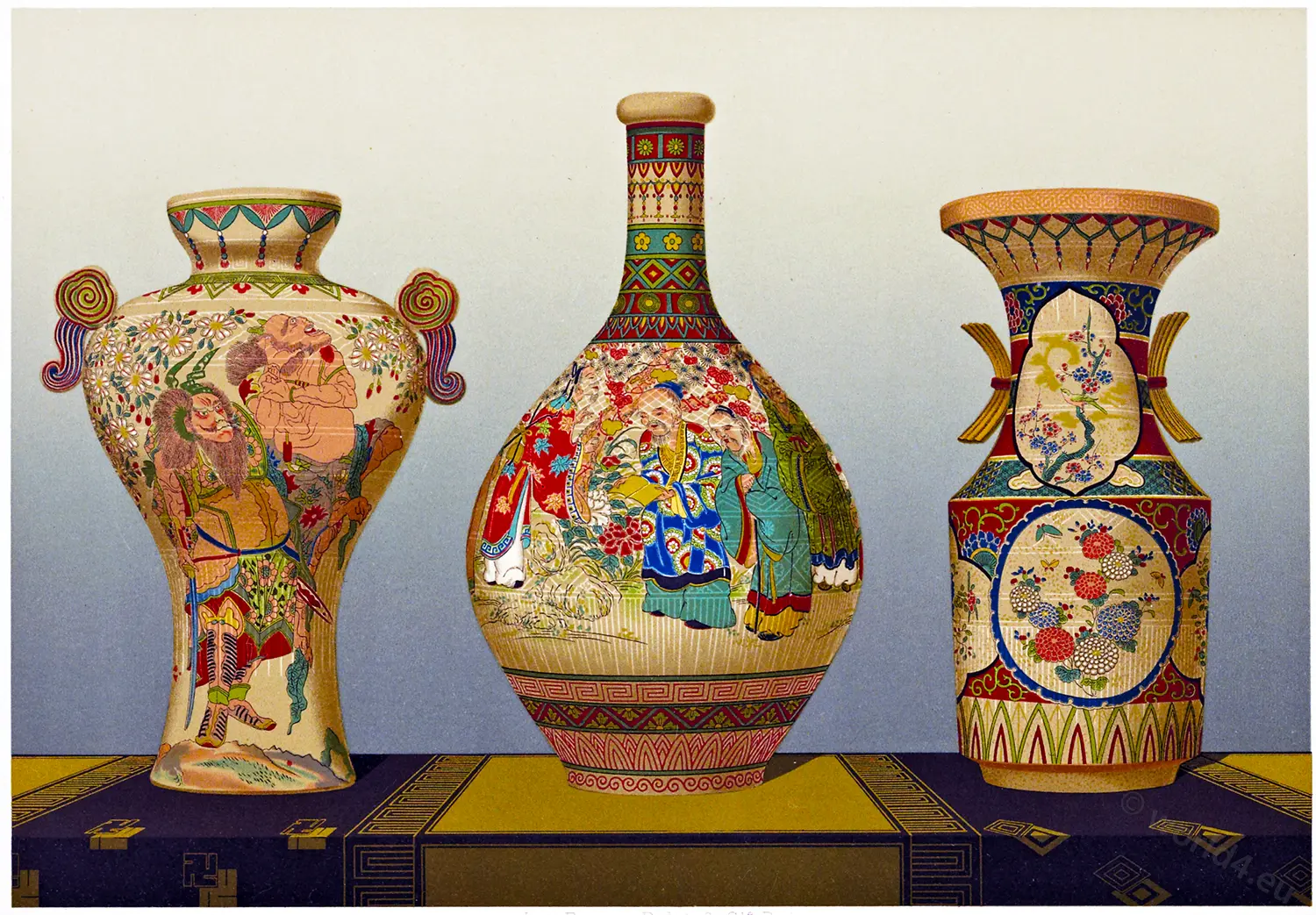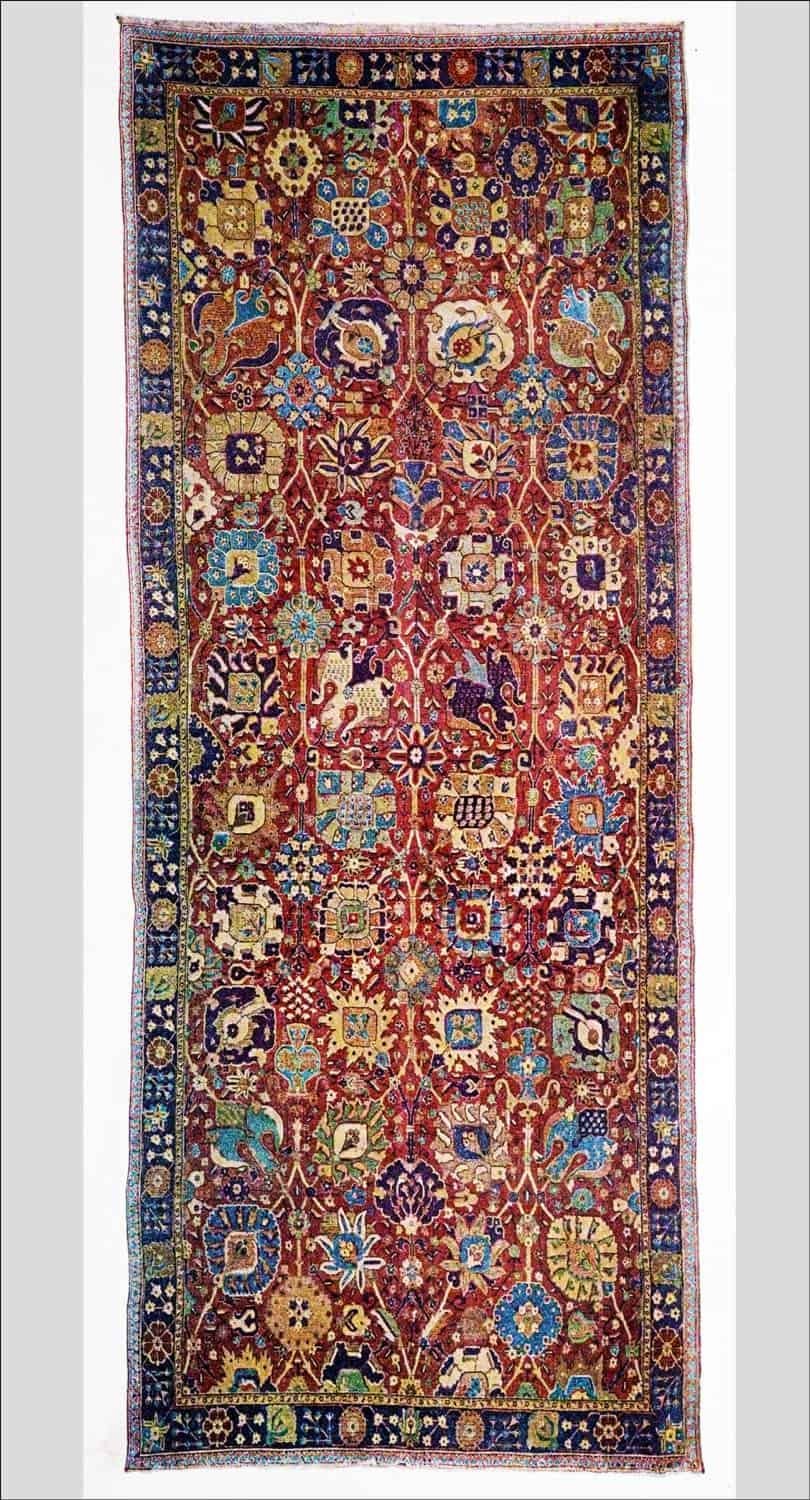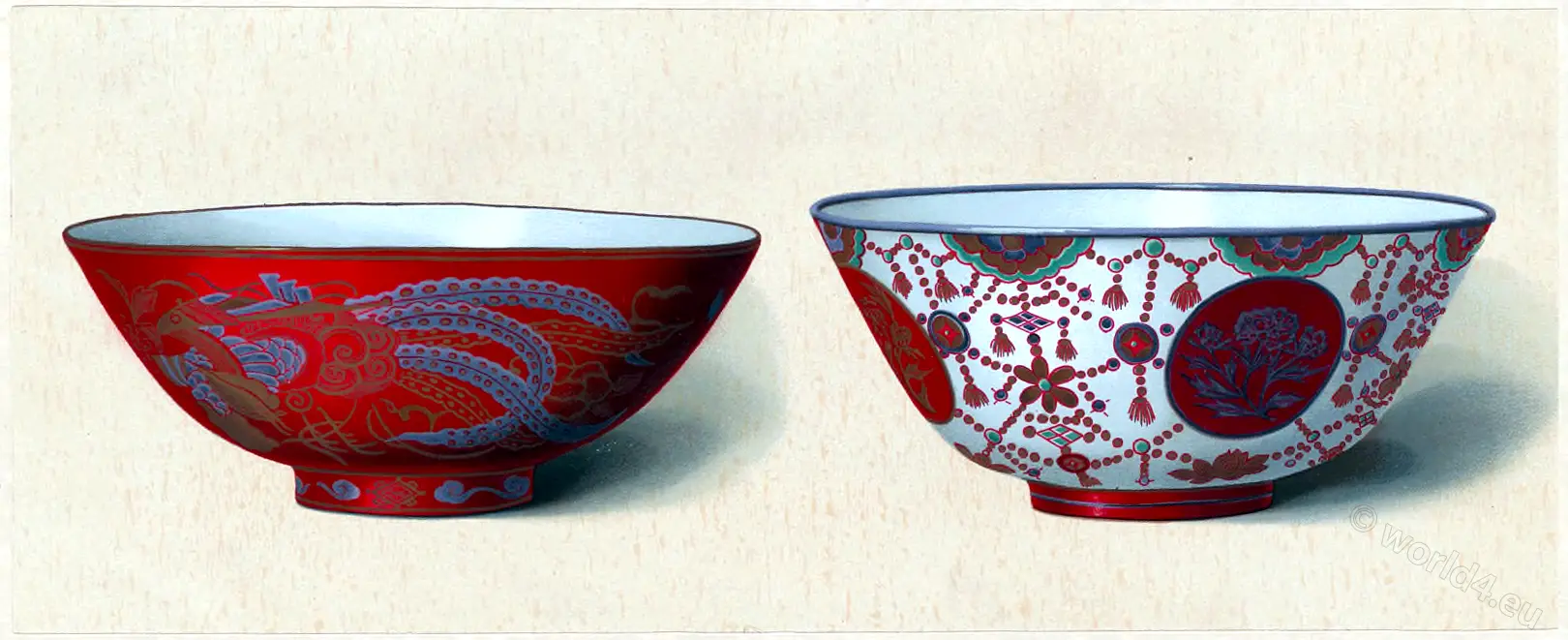KO KUTANI AND AO KUTANI. (九谷焼, Kutani-yaki)
Ko-kutani (old Kutani, 古九谷), from the 17th and early 18th centuries.
Ao-kutani also Saikō-Kutani (Revival Kutani), from the resumed production in the 19th century.
PLATE XX.
POLYCHROMATIC KUTANI WARES.
KAGA (Kutani factories).
Large flower vase. Ko Kutani ceramic
by George Ashdown Audsley and Lord James Bowes.
Large flower vase (hanaike), of rather soft white pottery, decorated in flat and slightly raised enamel colours and gold; elaborately ornamented with numerous borders, conventional designs, and medallions containing figures and flowers.
The lower portion is divided into two zones, one of which has a pattern, in red, blue and green, of a severe classic style, and the other a zigzag border of Gothic treatment; above these, the main body of the vase is grounded with red masses of the shippo tsunagi no wuchimi hana-bishi design upon gold scroll-work; at the starting lines of the necks of each are eight cusped compartments filled with diaper patterns, and the necks and bells are enriched with botan flowers, leaves, and gold scroll-work, and with pendant fringe borders.
There are four medallions, two minor ones, upon either side, filled with conventional clouds and fish-scale diapers, and two principal ones upon the faces.
The principal medallion contains a representation of a number of children playing at the game of Shishimai, or Lion-dance, with which they disguise themselves and amuse their neighbours. This game is derived from the theatrical performance of kagura which is, acted before Shinto temples in propitiation of the kami or deities of that religion. Shishimai, sometimes called Daikagura, is also acted by beggars who roam from house to house, as mummers were wont to do in England at Christmas time; (b) a peacock (kujaku) and peahen, with a peony (botan).
At the starting line of the neck are eight cusped compartments filled with different diaper patterns; and the neck and bell are tastefully enriched with botan flowers, leaves, and gold scrollwork, and with one of the pendant fringe borders, in the treatment of which the Japanese artists are so successful. Height, 20 inches.
The word Kutani is painted upon the bottom of the vase in red; the ornamental work which surrounds the mark is executed in green and black, but it has no practical significance.
In the possession of James L. Bowes, Esq.
Superordinate: History of Kutani ceramic. Kaga, Japan.
Source: Keramic art of Japan by George Ashdown Audsley (1838-1925); Lord James Bowes (1834-1899). London: H. Sotheran & co. 1881.)









